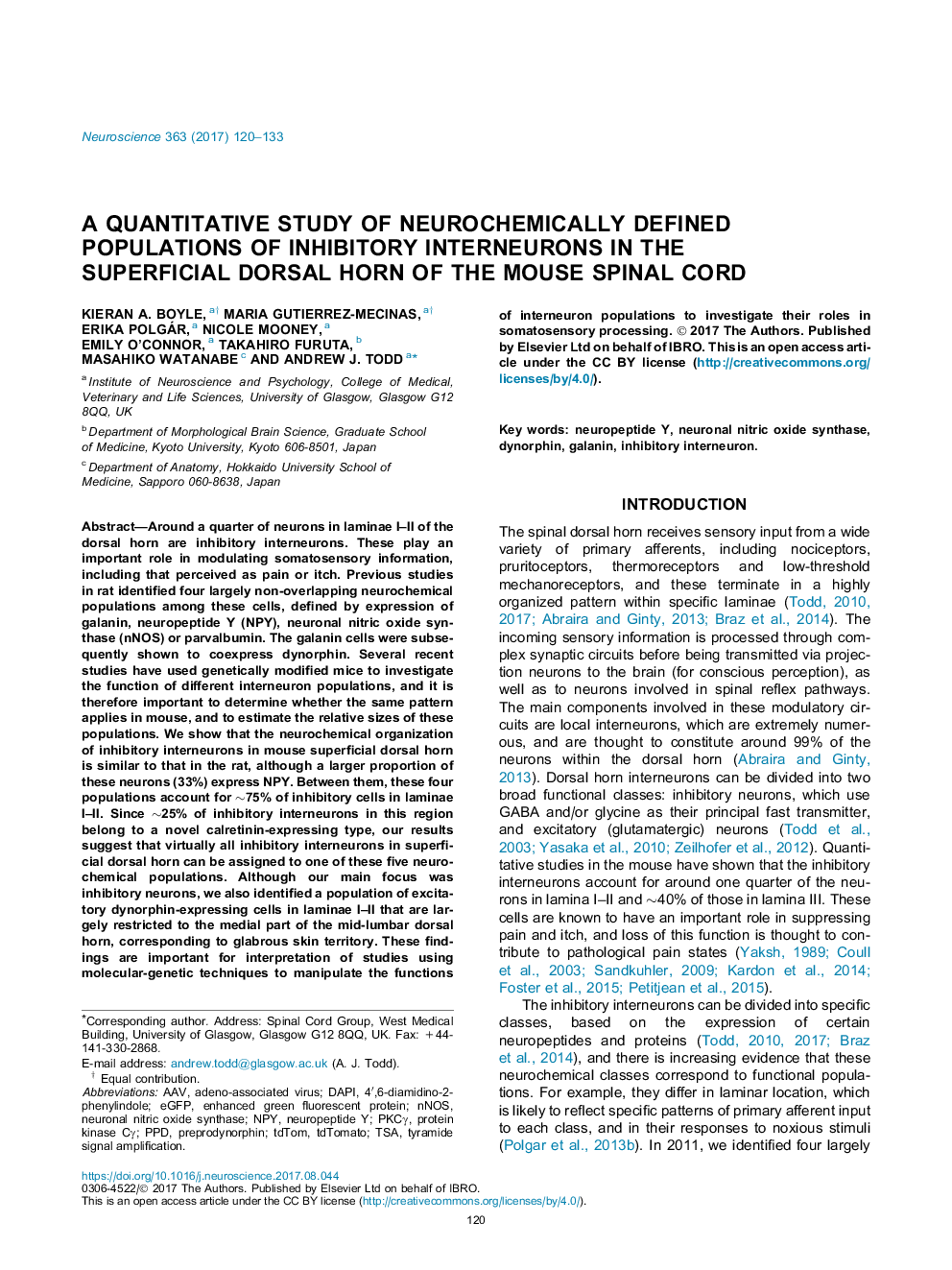| کد مقاله | کد نشریه | سال انتشار | مقاله انگلیسی | نسخه تمام متن |
|---|---|---|---|---|
| 5737345 | 1614713 | 2017 | 14 صفحه PDF | دانلود رایگان |
- Neurochemistry of lamina I-II inhibitory neurons in mouse is similar to that in rat.
- Five neurochemical classes account for all lamina I-II inhibitory neurons in mouse.
- Excitatory dynorphin cells are largely restricted to glabrous skin territory.
Around a quarter of neurons in laminae I-II of the dorsal horn are inhibitory interneurons. These play an important role in modulating somatosensory information, including that perceived as pain or itch. Previous studies in rat identified four largely non-overlapping neurochemical populations among these cells, defined by expression of galanin, neuropeptide Y (NPY), neuronal nitric oxide synthase (nNOS) or parvalbumin. The galanin cells were subsequently shown to coexpress dynorphin. Several recent studies have used genetically modified mice to investigate the function of different interneuron populations, and it is therefore important to determine whether the same pattern applies in mouse, and to estimate the relative sizes of these populations. We show that the neurochemical organization of inhibitory interneurons in mouse superficial dorsal horn is similar to that in the rat, although a larger proportion of these neurons (33%) express NPY. Between them, these four populations account for â¼75% of inhibitory cells in laminae I-II. Since â¼25% of inhibitory interneurons in this region belong to a novel calretinin-expressing type, our results suggest that virtually all inhibitory interneurons in superficial dorsal horn can be assigned to one of these five neurochemical populations. Although our main focus was inhibitory neurons, we also identified a population of excitatory dynorphin-expressing cells in laminae I-II that are largely restricted to the medial part of the mid-lumbar dorsal horn, corresponding to glabrous skin territory. These findings are important for interpretation of studies using molecular-genetic techniques to manipulate the functions of interneuron populations to investigate their roles in somatosensory processing.
Journal: Neuroscience - Volume 363, 5 November 2017, Pages 120-133
